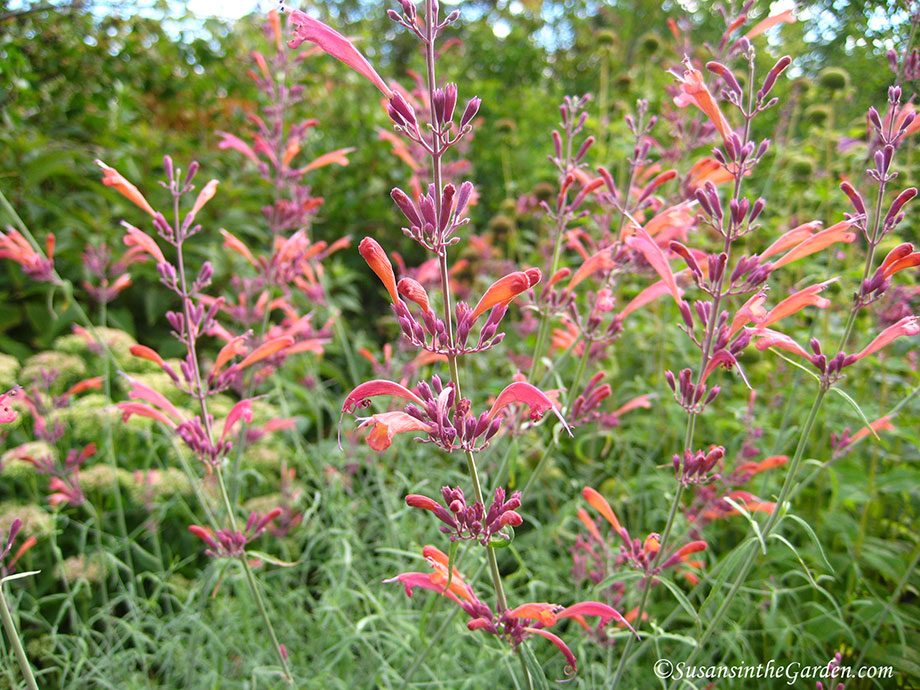May 23 Column: Water Conservation


For this week’s column, I wrote about water conservation in the garden. You can read it in today’s edition of The Spokesman-Review: Practice water conservation in your landscape. (or you can read the text of my column at the bottom of this post)
Here in Spokane, Wash., we’ve been experiencing a very dry spring which is unusual for us. That made me think about what we can all be doing to save water in our landscapes. Some of the ideas might be no-brainers while others will alert you to products that help with this.
My column also has an information box with a lot of excellent resources for both water conservation in general and choosing plants with low water needs for your landscape. Be sure to visit all of those sites, no matter where you live. If you live in another region, do a web search on xeriscaping to find plants that are ideally suited for your location (a xeriscape is a landscape that has been designed to require minimal irrigation, just in case you’re not familiar with the term).
I hope you’ll find the information in my column really useful and that it will jumpstart ideas on how we can all do our part for water conservation. We need to implement these steps for ALL years — not just the dry ones.
For this week’s video, I assembled and planted a GreenStalk Vertical Planter. As I mentioned in the video, the folks at GreenStalk contacted me a few months ago and asked if I’d like to try one. Since I’ve been seeing them in many of my colleague’s gardens and been curious about them, I agreed to test one in my own garden. Unfortunately, I had to wait quite a while until the danger of frost had passed.
I’m really impressed with the vertical planter for the following reasons:
- It is well made and designed
- It has a 5-year warranty
- It’s made in the U.S.A.
- GreenStalk is a family-owned and operated business
- They use BPA- and PVC-free plastics
- Their unique design irrigates all of the plants within the vertical planter
Here’s the video:
And here is my column:
By Susan Mulvihill
Our dry spring weather has a lot of folks concerned about how it will impact the Inland Northwest in general and our gardens in particular. While this is worrisome situation, we should take the time to evaluate how we use water in our landscapes, what we can do to conserve it and adopt water-saving practices all the time rather than only during dry years.
The best time of day to water our gardens is early in the morning because there will be less evaporation. Watering at night is less than ideal because the added moisture increases the chance of diseases spreading to our plants and makes it easier for certain bugs – such as slugs, cutworms and earwigs – to move about the garden.
Drip irrigation systems and soaker hoses are the most efficient way to water vegetable garden beds. They deliver water to the soil surface, making it easy for plants to access it, and there is little loss to evaporation. Overhead watering isn’t ideal because more evaporation takes place and wet leaves are more susceptible to disease issues.
In the rest of the landscape, it’s important to ensure that lawns, trees, shrubs and flower beds are getting an appropriate amount of moisture but not too much. Lawns require a lot of water but there are steps you can take to decrease that usage. Consider reducing the size of your lawn. Mow your lawn less frequently: the grass will shade the soil which in turn helps it retain moisture and reduces evaporation.
If you have a sprinkler system, watch the different areas of your yard while the sprinklers are running. Are they watering hard surfaces such as a sidewalk, patio or your driveway? If so, adjust the sprinkler heads to prevent this or at least minimize it. Repair dripping water spigots, make sure your hoses still have washers so they make a good connection with faucets and replace hoses that leak.
One thing that makes me cringe is seeing sprinklers running in the middle of a rainstorm. There are “smart” sprinkler systems available that allow you to control them remotely via your cell phone and they can be programmed based on local weather data. Additionally, there are low-volume sprinkler heads available to cut down on water usage.
When adding plants to your landscape, it’s wise to group them based on their water needs. Consider planting a xeriscape, which is a landscape filled with drought-tolerant plants. And if you think of cactus when you hear the word “xeriscape,” rest assured there are a lot of options for wonderful plants in this category. The information box contains links to many helpful plant selection guides.
It’s a good practice to mulch the soil of vegetable, flower and shrub beds. This helps the soil retain moisture, prevents soil compaction and makes it more difficult for weed seeds to germinate. My favorite materials include compost, shredded leaves and grass clippings from a lawn that hasn’t been treated with herbicides.
Let’s all do our part to conserve water, which is such a precious resource.
Susan Mulvihill is author of “The Vegetable Garden Pest Handbook.” She can be reached at Susan@susansinthegarden.com. Watch this week’s “Everyone Can Grow a Garden” video at youtube.com/susansinthegarden.
[INFORMATION BOX]Resources
- How to SmartScape (Spokane County Conservation District)
- Water Wise Landscaping (Spokane County Extension)
- Water Wise Landscaping for the Inland Northwest:
- Water Wise Spokane Outdoor Water Conservation guide
- Principles of Water Wise Landscaping (Utah State University Extension)
